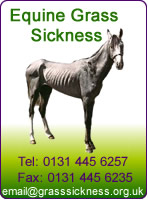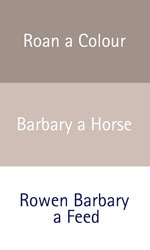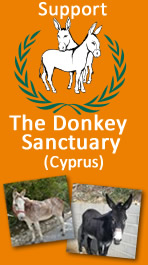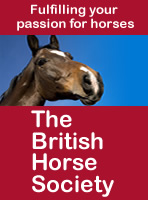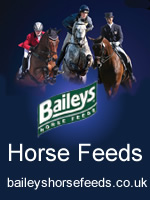
And photographs, if you have any.
Horseytalk.net Special Interview
John Bartelous
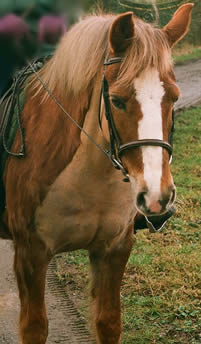 The countdown begins. From now until the end of the year
hundreds of thousands, maybe even millions of horses all
around the world will be clipped, re-clipped and clipped
again - many perhaps as a result of advice from “Peasridge” which
runs the world’s most informed web site for clippers
and trimmers and their Managing Director John Bartelous – who
has never clipped a horse in his life.
The countdown begins. From now until the end of the year
hundreds of thousands, maybe even millions of horses all
around the world will be clipped, re-clipped and clipped
again - many perhaps as a result of advice from “Peasridge” which
runs the world’s most informed web site for clippers
and trimmers and their Managing Director John Bartelous – who
has never clipped a horse in his life.
“I’ve clipped parts of horses,” he says. “Faces. Manes. Backs. Feathers . That kind of thing, when testing machines, but I’ve never given a horse a full clip.”
It doesn’t seem to have done him any harm! For today his web-site www.peasridge.co.uk is the largest, single, independent source of information on clippers and trimmers, clipper s and shearing machine parts, (not to mention a few thousand animal grooming products) in the world.
The whole operation, which is run solely by himself and his wife, Carolyn, is based in a comfortably furnished office alongside his home over-looking the Brede Valley , on the outskirts of Brede, East Sussex
There, he receives every month over half-a-million hits from people in over 175 countries enquiring about and ordering animal grooming products, clippers and clipper parts.
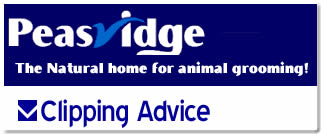 He even receives around 150 hits a month from somebody in
the White House in Washington, D.C.
He even receives around 150 hits a month from somebody in
the White House in Washington, D.C.
Is it the Obama’s ordering grooming products
for their dog?
“It could be,” he grins.
In many ways, John Bartelous, is the last person you would expect to be one of the world’s leading experts on animal clippers and blades.
He was born in Folkestone. On the outbreak of WW2, the family moved to Tunbridge Wells. As a teenager he spent the summer months working at a riding school and livery yard just outside of Tunbridge Wells, Kent to earn enough money for riding lessons.
The owner, he remembers, had a unique way of teaching children
how to ride.
“If you made a mistake when out on the ride ,” he says, “Mr
Peate – (He was always called Mr Peate). – would
make you go into the paddock. Removing the bridle and saddle,
he would make you get back on the horse. Bareback. Then whip
the back of the horse. You learnt to stay on very quickly,
believe me!”
Before long, not surprisingly, he was exercising the livery
hunters with the Peate brothers at 6am in the morning!
After a spell working in the City of London as a medical
insurance consultant, John moved back to Tunbridge Wells
and retired to start up his own business. In 1972 he met
his wife-to-be and a year later Carolyn and John married.
In 1974 they purchased a 17th Century period farmhouse in
Frittenden, Kent with a couple of acres of land and started
to raise a family.

Then suddenly one evening his whole life changed.
“I was at a cocktail party in the village, and talking to a local farmer.
I said, I’ve got two acres. I need somehow to get the grass cut. He
said, Get some sheep.
“He got me two ewes. Then a ram. A few years later visiting the Kent Show the desire to become a pedigree breeder became overpowering! We sold our lovely farmhouse and bought a farm and some 60 acres in a beautiful part of Devon!
“Didn’t know much about farming – but
you learn fast if you are keen!”
Before long he had extended the pedigree flock to 3,000 Romney
sheep. He then rented two other farms in Cornwall. With pedigree
sheep you need to exhibit them and make a name for the flock!
Soon he and his family were travelling the country attending
shows – with a few successes on the odd occasions!
In l985 against a sizable entry he won both the male and
female Romney Championships at the Royal Show.
“ I had arrived!” he says.
Soon he was exporting around the world.
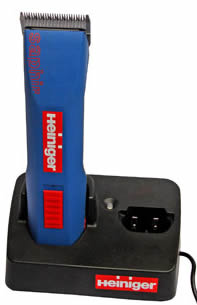 “On the farm we had started sheep lambing courses. My wife catered for
our residential course guests and I tutored! Soon we were featured on farming
programmes on television. We made our own lambing video. Still a popular lambing
video in agricultural colleges throughout the UK.
“On the farm we had started sheep lambing courses. My wife catered for
our residential course guests and I tutored! Soon we were featured on farming
programmes on television. We made our own lambing video. Still a popular lambing
video in agricultural colleges throughout the UK.
“During these Courses I became aware of the demand for certain sheep things that were not readily available. So I got the idea to start a mail order business, the “Peasridge Sheep Catalogue.” Everybody thought I was crazy! If farmers want anything, they go to market, people kept telling me. They don’t want to sit down, fill in a form and then post it.”
The first Peasridge Sheep Catalogue featured just 25 items
including their own homemade sheep lambing video.
One day an order was received from a company called Net-Tex
for a couple of videos. Curious, John contacted them.
He and the owner and Managing Director, Don Yates chatted.
Don came and visited John. They agreed the Peasridge Sheep
Catalogue would also include a range of Net-tex products.
The Catalogue expanded to several hundred products. They
also started promoting it at cattle and sheep shows up and
down the country. Then in the year 2000 disaster struck!
Foot-and-Mouth.
“Our livestock business died that day,” says John.
Fortunately some years earlier John had become interested in the Internet and computers – it offered a whole new potential!
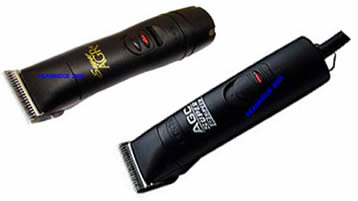 Peasridge had by then started to diversify into dog grooming
products. They decided to expand the range still further
and entered the “Clipper world!”. Already the
website had been born – now it was to become the sole
means of promoting the company!
Peasridge had by then started to diversify into dog grooming
products. They decided to expand the range still further
and entered the “Clipper world!”. Already the
website had been born – now it was to become the sole
means of promoting the company!
Says John, “I was always intrigued by Computers, which, of course, in those days were nothing like the computers we have today. My elder daughter, Jenny, and I enrolled in a pretty high powered web design course in London for a month. Most students were in their 30’s. I was knocking mid 50. The mental strain was hell. But the tutor persevered. Jenny created our first web-site home page. I did the text and images.”
At the beginning, they were selling a range of 1,500
products and getting between 25 and 30 hits a month.
Today, they are selling over 4,000 different products and
get a staggering half-a-million website hits every month.
Customers also ring and e-mail for information. They range
from ordinary members of the horse-owning public desperate
to get their clipper blades re-sharpened, dog groomers needing
advice and police forces clipping horses or dogs to camel
farmers clipping in the Middle East and the veterinary community
in the Falklands Islands.
For October, November and December, a very large proportion
of the business switches to horse clippers.
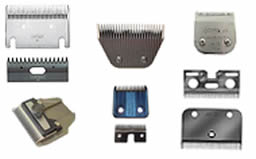 “Over 75-per-cent of all our hits for the next three months will be for
clipper advice, blade sharpening or clipper parts” says John. “ We
advise and sell to people all round the world –all over Europe, and as
far away as Australia. China and South America are also frequent on-line purchasers.”
“Over 75-per-cent of all our hits for the next three months will be for
clipper advice, blade sharpening or clipper parts” says John. “ We
advise and sell to people all round the world –all over Europe, and as
far away as Australia. China and South America are also frequent on-line purchasers.”
While John prefers to conduct business enquires by e-mail,
he does get frequent telephone calls.
“People ring up and seek advice – often they provide scant details
so one has to “dig” for relative information in order to advice
soundly!
“A range of possible areas can affect the clippers performance -just using cables, that are not the right cable thickness can cause a loss of power! The longer the cable, the more power you lose. You’d be amazed the numbers of people who still don’t know that!
“Tensioning, is the big problem. People think once you set the tensioning, that’s it!. With the old machines maybe you could get away with it – modern clippers – you need to make adjustments! . You may need different tensioning for different parts of the horse’s body and for different horses. Not every horse’s coat texture is the same. Not every mane is the same. You must adjust the tensioning to the horse and to the clip.”
CLIPPING ADVICE - HORSES - Why do we clip them?
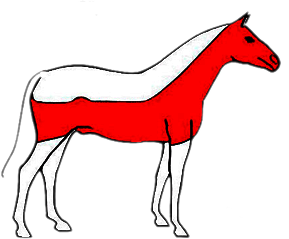 Horses
having evolved over millions of years have as a result adapted
well to the various weather patterns and climatic conditions
in which they live. In Northern Europe generally by the
end of October most horse and ponies will have grown a good
full winter coat in order to protect themselves from the
cold and wet weather conditions of winter. This coat will
be considerably thicker than the short sleek summer coat.
Horses
having evolved over millions of years have as a result adapted
well to the various weather patterns and climatic conditions
in which they live. In Northern Europe generally by the
end of October most horse and ponies will have grown a good
full winter coat in order to protect themselves from the
cold and wet weather conditions of winter. This coat will
be considerably thicker than the short sleek summer coat.
That is fine of course if our horses are going to experience a natural outdoor life for which nature has prepared them. However with the modern trend of stabling, feeding concentrated foods, and providing artificial warmth, we human change all that, and the natural protection provided becomes not so necessary. In fact for horses which are to be worked either by hunting, competing, or just plain exercise during the winter months it can be positively harmful.
Horse carrying a thick winter coat will quickly overheat from fast work or in exceptionally mild weather conditions, which can often be the case especially in the southern parts of the UK with the result that they sweat excessively to compensate. This creates a unhealthy state of affairs for a number of reasons which briefly are as follows
- Distress during working
- Possible loss of condition
- Difficulty in getting fit for working
- Parasite control - more difficult with a thick coat
- Getting a horse which has exercised dry before it chills
- In addition there are associated difficulties such as Grooming problems with a full coat.
- Keeping clean those who enjoy "wallowing" in mud
Horses which are to have their winter coats removed are usually clipped in October (this is known as the first clip) and a further clip is performed around time of Christmas, with a third, if required, done in early February. These are the normal times for clipping, but be mindful that no two years are the same and weather conditions are abnormal.
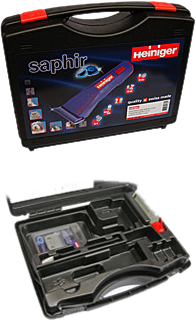 Clipping is something to think about, don't just
rush into it. Horses should be clipped for a reason!
Remember a clipped horse requires just as much time
if indeed not more, as well as additional expenditure,
so think before you clip!
Clipping is something to think about, don't just
rush into it. Horses should be clipped for a reason!
Remember a clipped horse requires just as much time
if indeed not more, as well as additional expenditure,
so think before you clip!
There are a number of various "clips" you can opt for and these will depend on which suit your circumstances best. Gear the “clip” to the nature of the work your horse will be required to do. To commit the "sin" of clipping off more coat than required, is considered “very bad management”, apart from which it will cost you a good deal more in extra feed, hay, bedding and rugs to keep the animal comfortable!
Details of the various clips will be found under
“Various
types of Clips for Horses”
In the unfortunate event of causing clipper burns to an animal it is recommended that generous applications of Cortisynth ointment is applied to the irritated area until healing has been fully completed. Clippers burns are viewed as a sign of carelessness!
When using a clipper if it is a mains appliance ensure the cable is clear of any obstacles and not in the way of your feet. Get your self well organised, and have a safe and secure place to put the machine when not in use even if only for a few moments. Many clippers are fitted with a "hanging loop" Use it and hang your clipper up when not using it! A clipper which accidentally falls to the ground may easily result in either a broken blade, broken casing, or internal damage all of which apart from terminating the clipping can also be costly!
“Today many of the smaller dog clippers are highly suitable for nervous horses and often make the difference between clipping and sedating. You do, however, need to know your blades! Here advice from Peasridge is invaluable whether you are the end user or the manufacturer! “
The reason for his Internet success?
John puts it down to the clear, concise, factual information
he provides on every single product he displays on his web-site.
“With clippers we test every machine as well as the blades” he
says. “We unashamedly highlight good and bad points! We give every
machine a rating. People appreciate that. Funnily enough, so does the industry.
Manufacturers - Most of them I know at executive level - tell me we provide
far more practical information than they themselves know.”
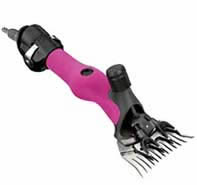 Today many manufacturers make sure Peasridge is involved
early on in design and test programmes – seeking their
advice and their expertise!
Today many manufacturers make sure Peasridge is involved
early on in design and test programmes – seeking their
advice and their expertise!
John receives a constant supply of both production and prototype models to test every year.
After the millions and millions of hits he has received and the many thousands of animal grooming products he must have sold over the years, does he remember the first clipper he ever sold?
“Yes,” he says. “It was a superior engineered German clipper. An Aesculap SE horse clipper – around the . £150.mark! To a livery yard. Somewhere in Sussex. I bet it’s still in use!”




